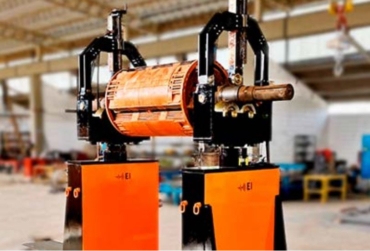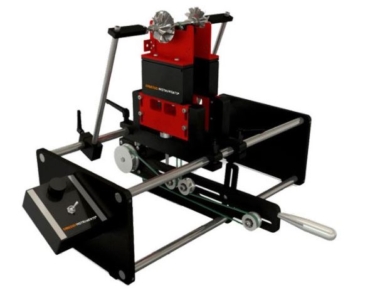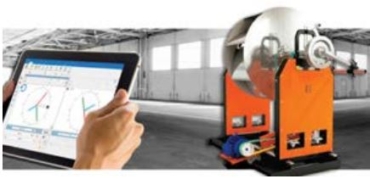
Imbalance is a leading cause of excessive machine/rotor vibration. It can be an inherent result of rotor design or construction. Imbalance can occur due to routine wear or damage. It can even be the result of environmental or process factors. It is important to remember that an apparent imbalanced condition (even one supported by vibration data) does not automatically mean a machine needs to be balanced. There are other conditions which present as imbalance that do not require a dynamic balancing process, such as:
– Process residue and other foreign objects: Before proclaiming that a rotor needs to be balanced, first confirm it is clean. Various deposits can build up equally around a rotor’s surface diameter. When part of it peels away, it puts the rotor into an imbalance can simply be washed away.
– Soft foot condition: A machine with a soft foot will appear to be imbalanced. But this issue cannot be corrected with balancing. In fact, efforts to balance or shaft align a machine with a soft foot condition will likely be fruitless and incredibly frustrating.
– Resonance: Every rotor has an inherent natural resonant frequency. So does every other component on a machine. When a rotor or other component is excited by an external force (such as running speed, other operating equipment, etc) the resulting vibration from that component will be substantially higher. Like striking a bell or shattering a crystal wine glass with sustained high note. If a rotor happens to be operating at or near its natural resonant frequency, it will appear to be terribly imbalanced until you change the speed. Then the vibration dissipates. Real imbalance is present at all speeds.

Static balancing methods are a great place to start the rotor balancing process. However, a rotor that appears balance in a resting state can be misleading. Some imbalanced conditions only become evident under dynamic conditions, while the rotor is in motion. These conditions must be corrected using a dynamic balancing method. With appropriate equipment and suitable knowledge, an imbalanced condition can be quickly corrected. There are several mechanical conditions that can complicate and frustrate attempts to balance a rotor. A thorough mechanical inspection should be conducted prior to dynamic balancing, to identify:
-Eccentric shafts: Usually detectable with a dial indicator near the end of the shaft. This condition must be corrected before balancing can be preformed.
-Bent, twisted, broken or otherwise deformed shafts: Usually detectable with a dial indicator closer to center shaft, versus measurements at the ends of the shaft. This condition must be corrected before balancing can be preformed.
-Off-center rotating element: This issue can certainly be corrected with balancing, but will often take longer and result in multiple corrections over a wide arc.
-Natural resonant frequency: Again, this will result in high vibration only within a specific speed range. Unwittingly trying to balance a rotor near its resonant frequency will be substantially harder. Balance at a different speed, if possible.

Dynamic balancing is a proven, effective method to eliminate a leading cause of machine vibration and restore optimal machine performance. Understanding when dynamic balancing is appropriate and whether a rotor is in proper condition to be balanced can make your maintenance efforts more effective and further reduce equipment downtime.








